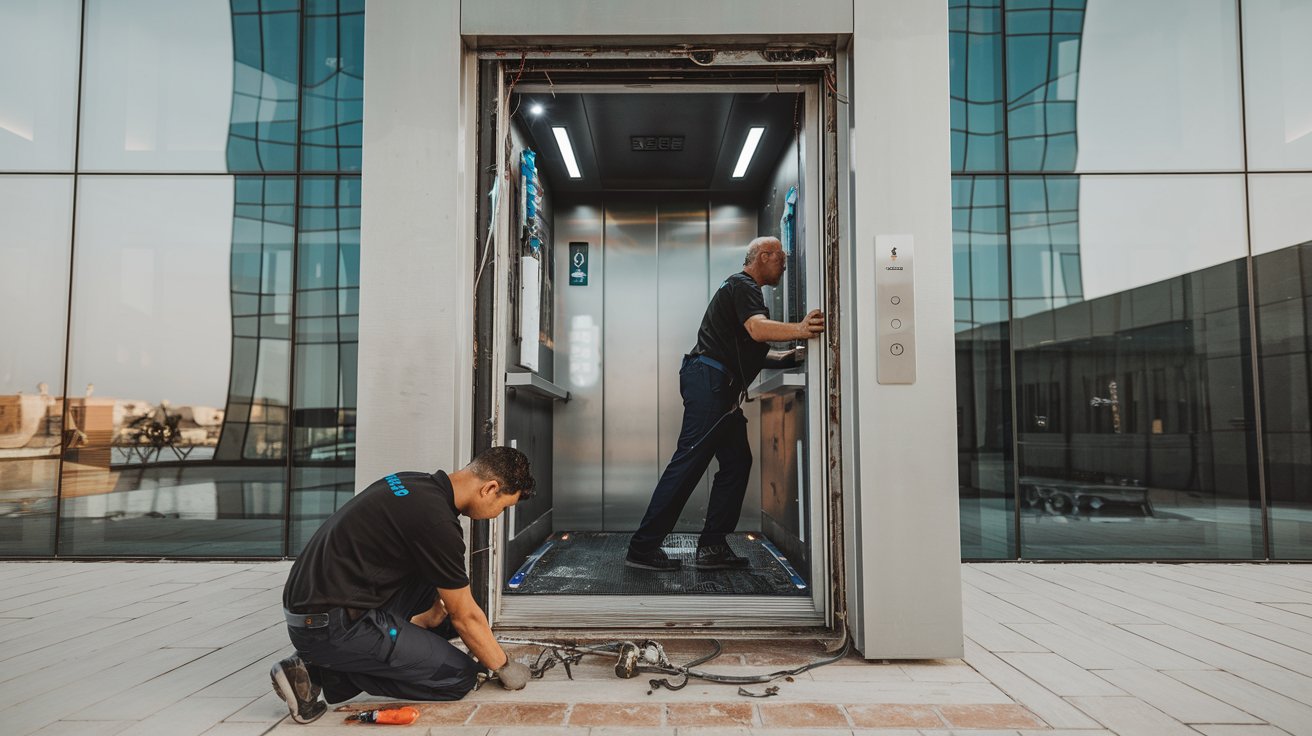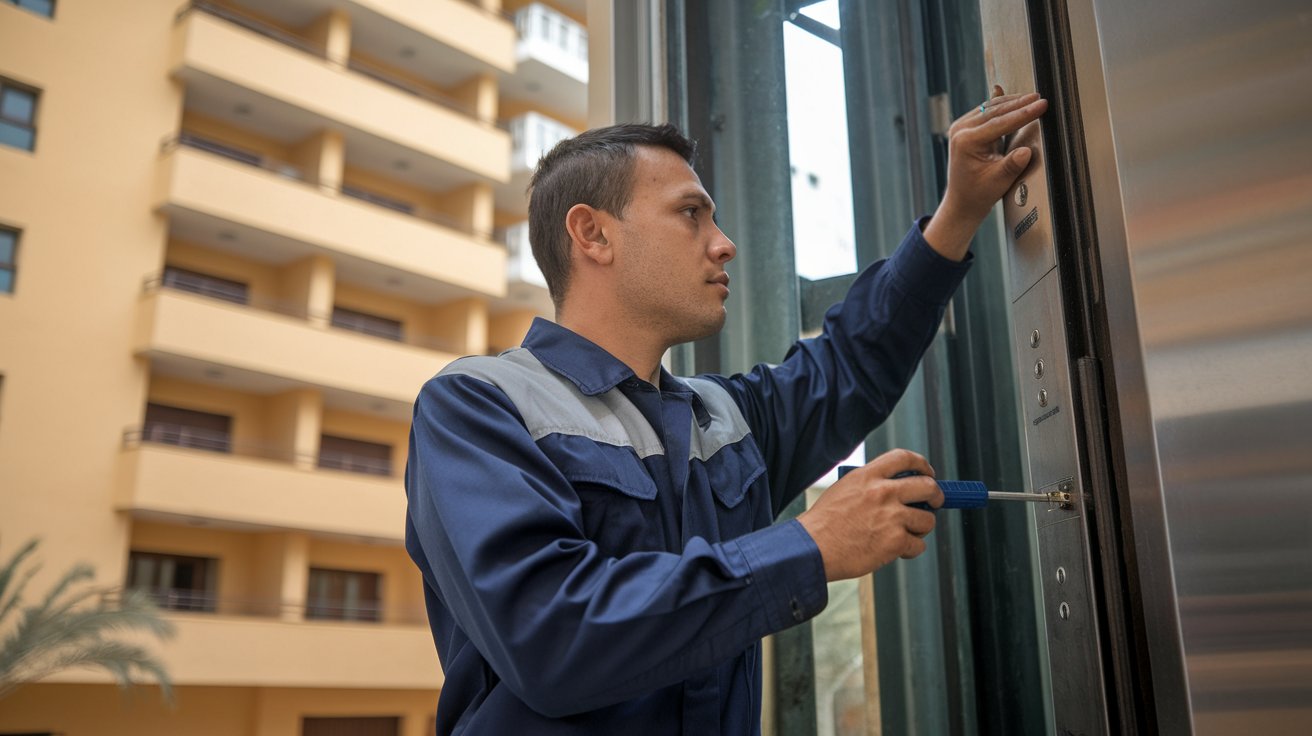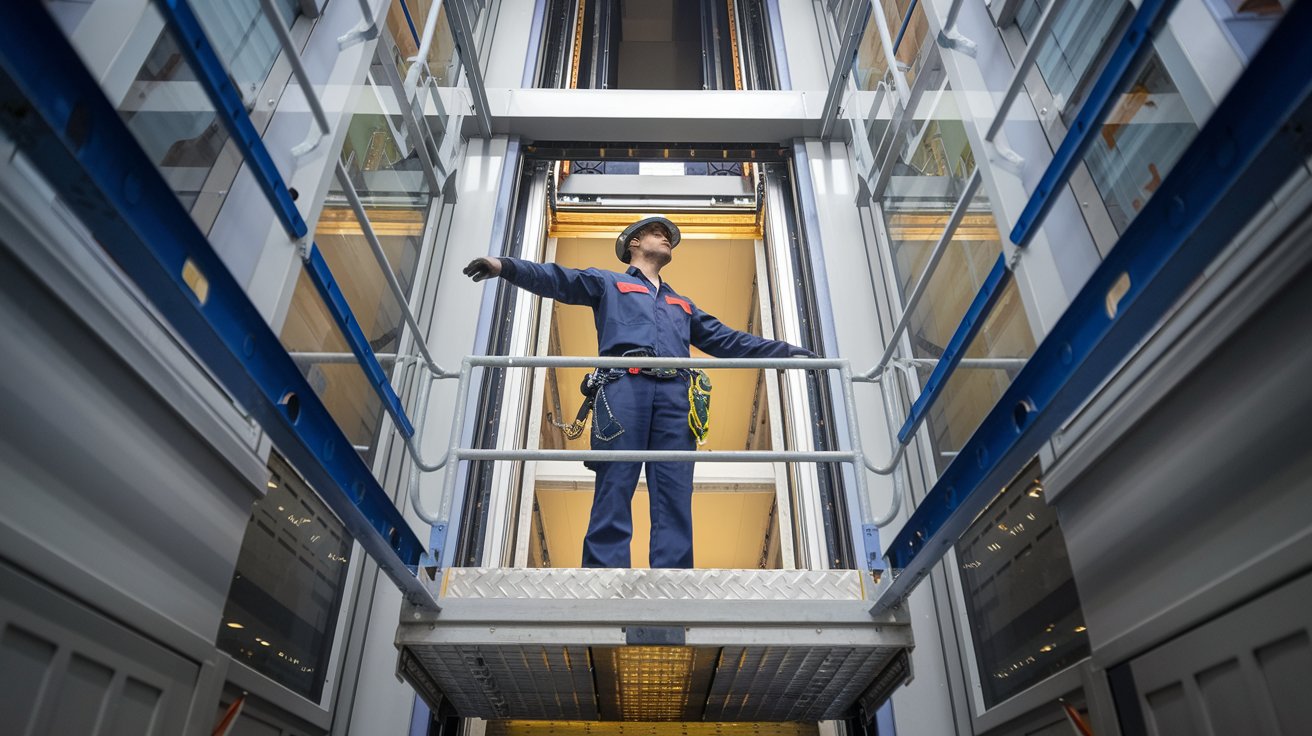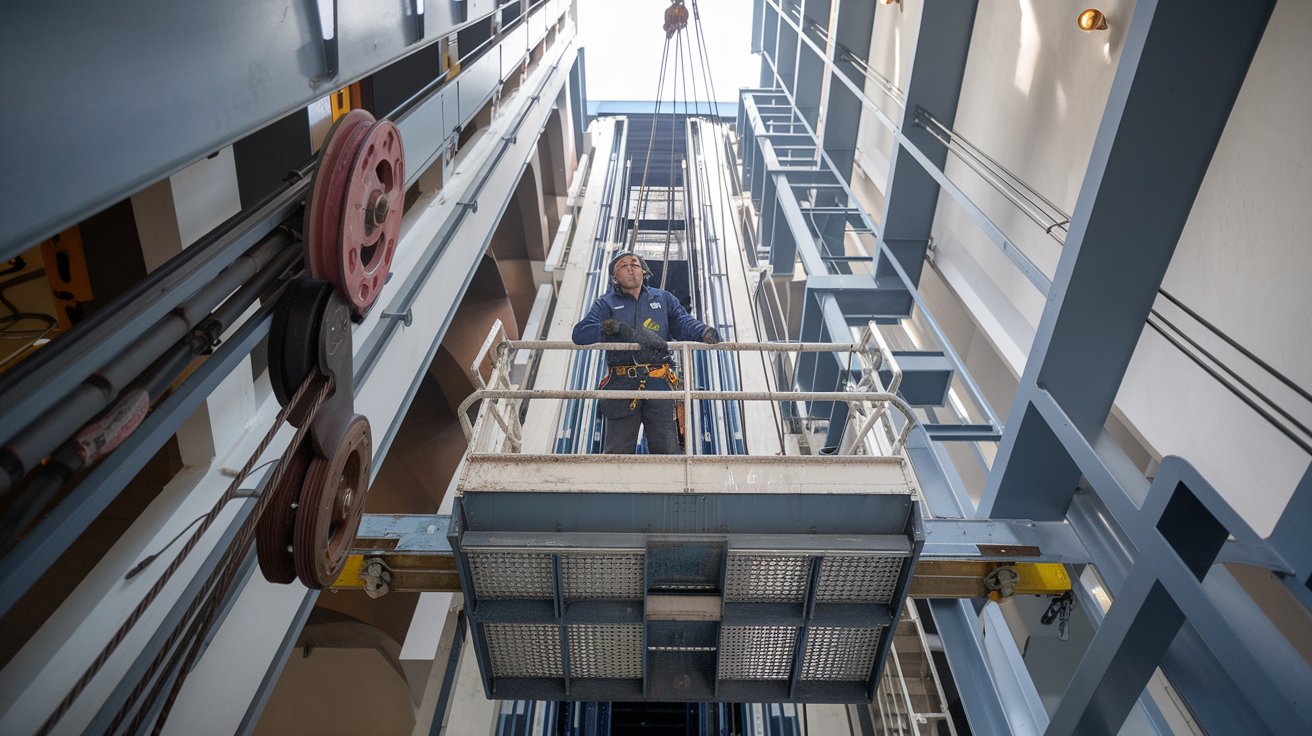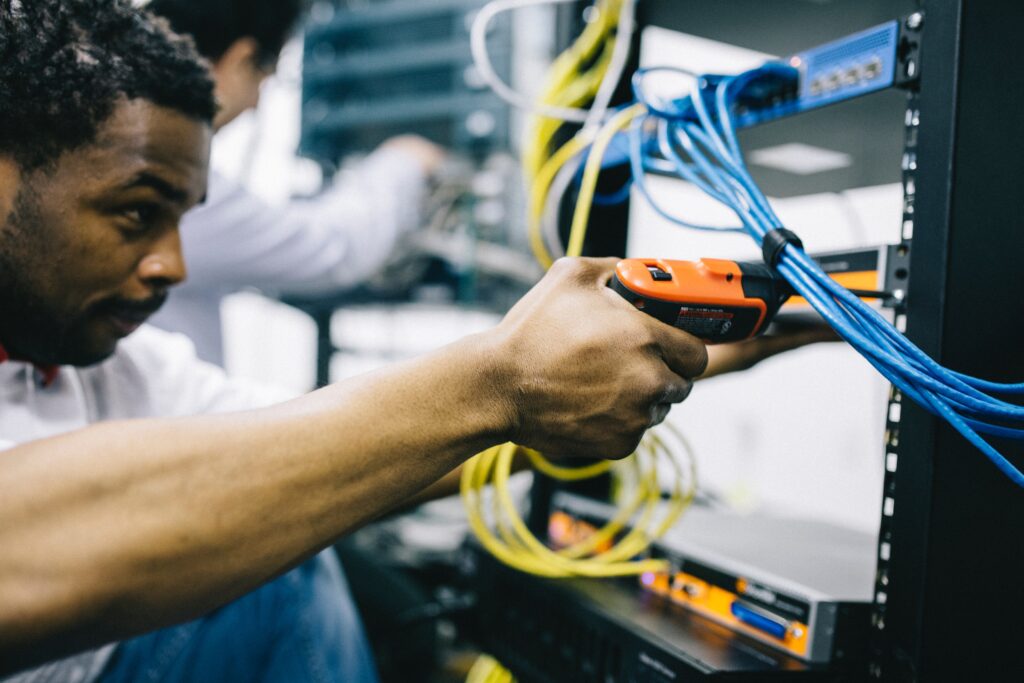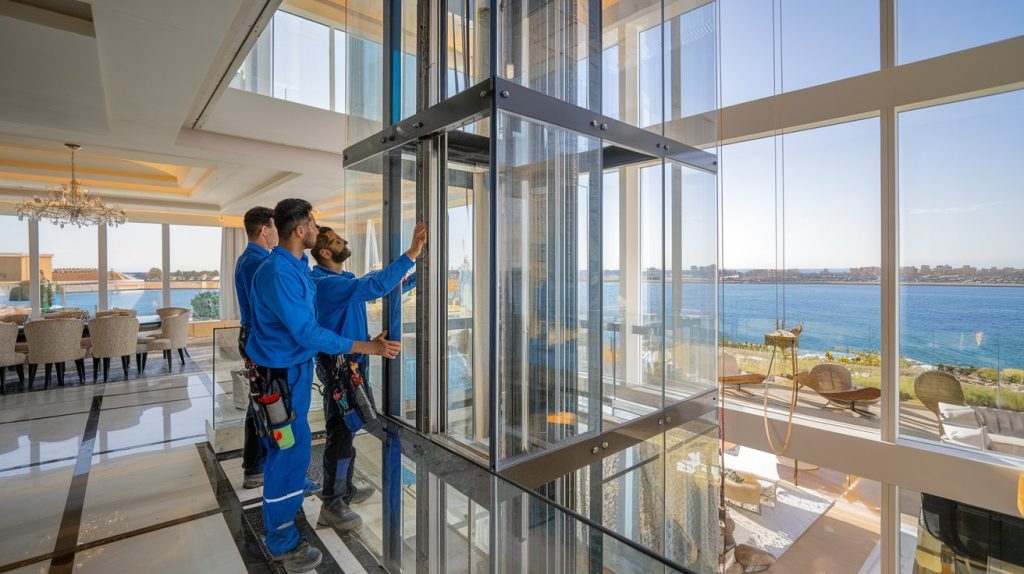Here’s an overview:
- Introduction to Elevator Maintenance
- Key Components of Elevator Maintenance
- Benefits of Regular Elevator Maintenance
- Roles and Responsibilities in Elevator Maintenance
- Regulatory Compliance
- Tools and Equipment Used
- Challenges in Elevator Maintenance
- The Importance of Safe Elevators in Hurghada
- Safety Standards and Regulations
- Preventing Accidents
- Reliability for Tourists
- Importance for Elderly and Disabled Individuals
- Impact on Property Value
- Emergency Preparedness
- Technological Advancements
- Overview of Elevator Maintenance Procedures
- Common Issues in Elevators and Their Solutions
- 1. Door Malfunctions
- 2. Unexpected Stops or Slow Movement
- 3. Unusual Noises
- 4. Overheating
- 5. Electrical Failures
- 6. Alignment Issues
- 7. Emergency System Failures
- Benefits of Regular Elevator Maintenance
- Legal and Regulatory Requirements in Hurghada
- Seasonal Considerations for Elevator Maintenance in Coastal Regions
- Weather and Environmental Impacts
- Seasonal Maintenance Checklist
- Special Equipment and Materials
- Training and Expertise
- Steps for Choosing the Right Maintenance Service Provider
- 1. Verify Credentials
- 2. Evaluate Experience
- 3. Check References and Reviews
- 4. Assess Response Times
- 5. Understand the Range of Services
- 6. Compare Pricing
- 7. Discuss Maintenance Plans
- 8. Evaluate Customer Service
- 9. Assess Technological Capabilities
- 10. Confirm Insurance Coverage
- Impact of Technology on Elevator Safety and Maintenance
- Advanced Safety Features
- Predictive Maintenance
- Diagnostic Tools
- Benefits of Technology Integration
- Case Studies: Successful Maintenance Programs in Hurghada
- Five-Star Hotels and Resorts
- Residential Complexes
- Commercial Complexes
- Future Trends in Elevator Maintenance
- 1. Predictive Maintenance
- 2. Remote Monitoring and Diagnostics
- 3. Augmented Reality (AR) and Virtual Reality (VR)
- 4. Green Technologies
- 5. Enhanced Safety Protocols
- Conclusion: Ensuring Safety and Reliability
Introduction to Elevator Maintenance
Elevator maintenance is an essential service that ensures the safe and reliable operation of elevators in residential and commercial buildings. It involves regular inspections, testing, and repairs to keep elevators functioning efficiently. In Hurghada, where the climate and environmental conditions can affect mechanical systems, consistent elevator maintenance becomes even more critical.
Key Components of Elevator Maintenance
- Regular Inspections:
- Visual inspection of all components
- Checking for wear and tear
- Ensuring compliance with safety regulations
- Lubrication and Cleaning:
- Lubricate moving parts to prevent friction
- Clean elevator shafts to remove debris
- Ensuring smooth operation of doors and other mechanisms
- Testing Safety Systems:
- Emergency brake testing
- Alarm and communication system checks
- Fire safety equipment assessment
- Mechanical and Electrical Adjustments:
- Calibration of control systems
- Adjustment of cable tension and alignment
- Replacing worn-out parts such as bearings or belts
- Software and Firmware Updates:
- Updating control software to the latest version
- Testing software functionality post-update
-
Regular elevator maintenance in Hurghada by skilled technicians ensures safety and reliability, preventing elevator breakdowns and enhancing overall efficiency.
Benefits of Regular Elevator Maintenance
- Increased Safety:
- Regular inspections help identify potential issues before they become hazards
- Ensuring safety features function correctly prevents accidents
- Enhanced Reliability:
- Well-maintained elevators have fewer breakdowns
- Scheduled maintenance reduced unexpected downtime
- Cost Efficiency:
- Preventive maintenance reduces the need for expensive repairs
- Extends the lifespan of the elevator system
Roles and Responsibilities in Elevator Maintenance
- Technicians:
- Conducting thorough inspections and maintenance tasks
- Documenting findings and actions taken
- Building Managers:
- Scheduling regular maintenance visits
- Ensuring compliance with maintenance contracts
- Manufacturers:
- Providing maintenance guidelines
- Offering technical support and parts
Regulatory Compliance
- Local Regulations:
- Adhering to Hurghada’s building safety codes
- Ensuring elevators meet local inspection requirements
- International Standards:
- Compliance with standards such as ISO 9001
- Following guidelines from the American Society of Mechanical Engineers (ASME)
Tools and Equipment Used
- Diagnostic Tools:
- Multimeters for electrical testing
- Ultrasonic testers for material integrity
- Safety Gear:
- Harnesses for working at heights
- Protective gloves and eyewear
- Maintenance Kits:
- Set of wrenches and screwdrivers
- Lubricants and cleaning agents
Challenges in Elevator Maintenance
- Environmental Factors:
- Coastal humidity in Hurghada can cause corrosion
- Sand and dust accumulation in mechanical parts
- Technological Advancements:
- Keeping up-to-date with the latest elevator technologies
- Training staff on new maintenance techniques
- Resource Availability:
- Availability of spare parts
- Access to skilled technicians
Regular and thorough elevator maintenance not only ensures the safety and reliability of the system but also extends the life of the equipment and helps to comply with local and international safety standards.
The Importance of Safe Elevators in Hurghada
In a rapidly developing city like Hurghada, elevator safety is paramount. As more residential and commercial buildings rise, ensuring the safety of elevator systems becomes crucial for the well-being of residents and visitors. This section highlights key aspects of elevator safety that must be addressed.
Safety Standards and Regulations
Maintaining high safety standards and adhering to local and international regulations are essential. Authorities in Hurghada enforce safety codes that include:
- Routine inspections.
- Compliance with Egyptian safety standards.
- Adoption of ISO-certified equipment.
Preventing Accidents
Proper functioning elevators significantly reduce the risk of accidents. Safety measures to prevent accidents include:
- Regular maintenance checks.
- Swift response to reported issues.
- Implementation of advanced safety features, such as:
- Emergency brake systems.
- Automated door sensors.
- Overload warning systems.
Reliability for Tourists
With Hurghada being a popular tourist destination, elevators in hotels and resorts need to operate reliably. Tourists expect:
- Smooth and uninterrupted service.
- Immediate responses to malfunctions.
- Availability of emergency features, like alarm buttons and intercoms.
Importance for Elderly and Disabled Individuals
Safe elevators are vital for elderly and disabled individuals, who depend on reliable vertical transportation. This requires:
- Ensuring all elevators are accessible.
- Regular functionality tests to avoid sudden breakdowns.
- Installation of easy-to-use control panels.
Impact on Property Value
Elevator safety directly impacts property values. Prospective buyers and tenants prioritize buildings with:
- Modern, well-maintained elevator systems.
- Clear records of safety and maintenance protocols.
- Peace of mind regarding long-term usability and reliability.
Emergency Preparedness
Preparedness for emergencies within elevator systems includes:
- Regular drills for building staff.
- Readily available emergency services contact information.
- Clear signage for usage protocols during emergencies.
Technological Advancements
Incorporating technological advancements enhances safety. Implementation of new technologies entails:
- Smart monitoring systems for real-time status updates.
- Predictive maintenance using AI algorithms.
- Integration of IoT for efficient operational management.
By prioritizing these aspects, Hurghada can ensure that its residents, tourists, and building owners all experience the benefits of safe and reliable elevator systems.
Overview of Elevator Maintenance Procedures
Elevator maintenance is pivotal for ensuring the safety and reliability of elevator systems in Hurghada. The process involves a comprehensive series of checks, repairs, and updates designed to keep the equipment operating efficiently and safely. Maintenance procedures generally encompass the following key components:
- Routine Inspections:
- Examine all mechanical components for wear or damage.
- Inspect the electrical systems, including wiring and connections.
- Check for any signs of corrosion or water damage.
- Ensure the smooth operation of doors and other moving parts.
- Lubrication and Cleaning:
- Apply lubricants to reduce friction in mechanical parts.
- Clean all components, including tracks, pulleys, and cab interiors.
- Remove dust, debris, and other contaminants that may impede performance.
- Performance Testing:
- Conduct load tests to verify the elevator can handle its rated capacity.
- Measure speed and leveling accuracy to confirm proper function.
- Test emergency features, such as alarms and communication systems.
- Safety System Checks:
- Inspect and test all safety brakes and emergency brakes.
- Verify the functionality of the emergency stop button and interlocks.
- Check the alignment and tension of cables and belts.
- Control System Updates:
- Update software and firmware in electronic control systems.
- Calibrate sensors and other digital components to ensure accuracy.
- Replace outdated or inefficient parts with modern equivalents.
- Documentation and Reporting:
- Maintain a detailed log of all inspections, repairs, and tests.
- Provide a comprehensive report to stakeholders, outlining findings and recommendations.
- Keep records of all parts replaced and services performed.
“Regular maintenance not only extends the lifespan of an elevator but also enhances passenger safety and efficiency,” a leading elevator technician in Hurghada explains.
- Compliance and Certification:
- Ensure all procedures meet local and international safety standards.
- Obtain the necessary certifications and approvals following maintenance activities.
- Schedule and notify regulatory bodies for periodic assessments.
Implementing these maintenance procedures ensures that elevators operate efficiently, minimizing downtime and enhancing safety. Adhering to these steps helps in detecting potential issues early, preventing costly repairs, and promoting a safer environment for all users.
Common Issues in Elevators and Their Solutions
Proper elevator maintenance is crucial in identifying and addressing common issues to ensure safety and reliability. Below are some prevalent issues experienced in elevators and their respective solutions:
1. Door Malfunctions
Cause:
- Misaligned doors or obstruction in the door tracks.
- Faulty door sensors.
Solution:
- Regular inspection and alignment of elevator doors.
- Cleaning and lubricating door tracks to prevent obstruction.
- Testing and calibration of door sensors to ensure they function correctly.
2. Unexpected Stops or Slow Movement
Cause:
- Worn-out or damaged elevator cables.
- Issues with the elevator motor or control system.
Solution:
- Routine examination and replacement of elevator cables.
- Inspection and servicing of the elevator motor and control system to ensure optimal performance.
3. Unusual Noises
Cause:
- Lack of lubrication in moving parts.
- Loose or worn-out components.
Solution:
- Regular lubrication of all moving parts.
- Tightening or replacing any loose or worn-out components to prevent further damage.
4. Overheating
Cause:
- Excessive friction in elevator machinery.
- Inadequate ventilation or cooling system.
Solution:
- Ensure proper lubrication to reduce friction.
- Installation and maintenance of an adequate cooling system or ventilation.
5. Electrical Failures
Cause:
- Faulty wiring or worn-out electrical components.
- Power surges or interruptions.
Solution:
- Regular inspection of wiring and replacement of worn-out electrical components.
- Installation of surge protectors and backup power systems.
6. Alignment Issues
Cause:
- Wear and tear in guiding tracks or misalignment.
Solution:
- Periodic alignment checks and adjustments of the guiding tracks.
- Replacement of worn-out components to maintain proper alignment.
7. Emergency System Failures
Cause:
- Outdated or untested emergency systems.
Solution:
- Regular testing and updating of all emergency systems, including alarms and communication devices.
Routine maintenance and timely intervention can significantly reduce these common issues, ensuring the safety and reliability of elevators in Hurghada.
Benefits of Regular Elevator Maintenance
Regular elevator maintenance significantly enhances operational reliability and safety. An elevator is a sophisticated system that requires frequent servicing to operate seamlessly. Here are the key benefits:
- Enhanced Safety: Routine inspections and maintenance can identify potential safety hazards before they become critical issues. This proactive approach reduces the risk of accidents and ensures passenger safety.
- Extended Lifespan: Regular upkeep helps to extend the lifespan of the elevator components. Lubrication, adjustments, and timely repairs prevent premature wear and tear, resulting in a more durable and long-lasting system.
- Cost Efficiency: Preventative maintenance is generally less expensive than emergency repairs. Minor issues can be rectified during scheduled maintenance visits, avoiding costly breakdowns and extensive repairs.
- Compliance with Regulations: Regular servicing ensures that the elevator complies with local safety and building regulations. This compliance is crucial for avoiding legal penalties and maintaining a safe environment for users.
- Improved Performance: Regular maintenance ensures that the elevator operates smoothly and efficiently. This results in a better user experience, reducing wait times and improving the overall functionality of the building’s transportation system.
- Increased Property Value: Well-maintained elevators can enhance the value of a property. Prospective buyers or tenants view a reliable elevator system as a key feature of a well-maintained building.
Regular maintenance visits typically include a series of checks and tasks:
- Visual Inspections: Technicians conduct thorough visual inspections of all elevator components, identifying wear and potential issues.
- Performance Testing: Evaluating the elevator’s performance, including its speed, leveling, and door operations, helps ensure it functions as intended.
- Lubrication and Cleaning: Proper lubrication of moving parts reduces friction and wear, while cleaning ensures sensors and mechanisms operate without obstruction.
- Safety System Checks: Verifying that emergency systems, such as alarms, emergency lights, and communication devices, are fully operational.
The proactive approach of regular maintenance mitigates risks, optimizes performance, and ensures a safe, efficient transportation solution in any building.
Legal and Regulatory Requirements in Hurghada
Regular elevator maintenance in Hurghada must adhere to several legal and regulatory requirements. These regulations ensure safety and operational reliability, making compliance essential for property owners and maintenance companies. Key areas of focus include:
- National Building Code Compliance:
- Elevators must comply with the national building codes outlined by Egyptian authorities. These codes dictate the standards and protocols for elevator installation, maintenance, and operation.
- Periodic Inspections:
- The law mandates periodic inspections of elevator systems by certified professionals. These inspections aim to identify potential issues, ensuring timely repairs and preventing accidents.
- Certification and Licensing:
- Maintenance personnel must hold valid licenses and certifications. This ensures that only qualified individuals conduct maintenance and repairs, adhering to established safety standards.
- Safety Standards:
- Elevators must meet specific safety criteria, such as proper emergency brake systems, safe speed limits, and efficient door operation mechanisms. Compliance with these standards minimizes the risk of accidents and enhances user safety.
- Logbook Maintenance:
- Property owners must maintain a detailed logbook of all inspection and maintenance activities. This logbook serves as a record of compliance and is subject to review by regulatory authorities.
- Emergency Protocols:
- Regulations require the implementation of emergency protocols, including the presence of alarm systems, communication devices within the elevator, and clear instructions for passengers in case of emergencies.
- Penalties for Non-Compliance:
- Failing to comply with regulatory requirements can result in severe penalties. These may include fines, legal actions, and in severe cases, suspension of elevator operation until compliance is achieved.
- Local Regulations:
- Hurghada may have additional local regulations that supplement national laws. Property owners and maintenance companies must stay informed of any local ordinances to ensure full compliance.
- Insurance Requirements:
- Adequate insurance coverage is mandatory. It provides protection against liabilities arising from elevator malfunctions or accidents, safeguarding both property owners and users.
- Accessibility Standards:
- Elevators must be accessible to individuals with disabilities. Regulations ensure compliance with accessibility standards, promoting inclusiveness and equal access for all users.
Adherence to these legal and regulatory requirements in Hurghada ensures the safety, reliability, and efficiency of elevator systems. It underscores the significance of comprehensive maintenance practices and regulatory compliance in fostering a secure environment for all elevator users.
EL MASRYA ITALY For Elevators & Escalators
Supply, Installation, Renovation, Maintenance, and Sale of All Alevator and Ascalator Spare Parts.
Address: 149 El Talatini Street, El Dahar, Hurghada, Red Sea Location:https://maps.app.goo.gl/yH1aJnnQrYLEgSTX6
Phone Number: 01096595270 – 01003357725
Email: [email protected] – [email protected]
Website:www.elmasryaitaly.com
Store: www.store.elmasryaitaly.com
Seasonal Considerations for Elevator Maintenance in Coastal Regions
Maintaining elevators in coastal regions like Hurghada requires heightened attention to seasonal conditions, which can significantly impact both safety and reliability. Coastal environments are characterized by high humidity, salt air, and temperature fluctuations, creating specific challenges for elevator systems.
Weather and Environmental Impacts
- Humidity and Salt Exposure: High humidity levels combined with salty air can corrode metallic components, including cables, pulleys, and structural frames. Corrosion can lead to mechanical failures and reduced lifespan of critical parts.
- Temperature Variations: Coastal areas often experience drastic temperature changes between day and night. These fluctuations can cause expansion and contraction of elevator components, increasing wear and tear on mechanisms and materials.
Seasonal Maintenance Checklist
- Pre-Monsoon Inspections:
- Inspect for any signs of rust and corrosion on metal surfaces.
- Test the elevator’s humidity-resistant seals to ensure they are intact and functional.
- Clean and lubricate mechanical components to prevent rust and reduce moisture buildup.
- Post-Monsoon Maintenance:
- Check for water damage, especially in elevator pits and shafts.
- Inspect electrical systems for moisture infiltration and corrosion.
- Reinforce waterproofing measures around elevator entrances and exits.
- Winter Precautions:
- Ensure heating systems within elevator shafts are functional to avoid condensation issues.
- Verify the operation of door seals to prevent cold air and moisture from affecting interior components.
- Regularly check emergency power supplies due to increased power outages during storms.
Special Equipment and Materials
- Corrosion-Resistant Materials: Use stainless steel or specially coated components to resist the deteriorating effects of salt air and humidity.
- Humidity Control Systems: Implement systems that control and reduce humidity levels inside elevator shafts and machine rooms.
- Advanced Waterproofing: Utilize advanced waterproofing materials and techniques to protect crucial electrical components from moisture damage.
Training and Expertise
- Specialized Technician Training: Elevator technicians should receive specialized training to handle the unique challenges posed by coastal environments.
- Regular Updates on Technology: Stay updated on the latest materials and technologies designed to improve elevator performance and durability in coastal climates.
Proper maintenance, taking these seasonal variations into account, ensures that elevators in coastal regions remain safe, reliable, and endure less wear and tear over time. By addressing these challenges proactively, elevator systems can be safeguarded against the harsh coastal conditions that threaten their operational integrity.
Steps for Choosing the Right Maintenance Service Provider
1. Verify Credentials
Ensuring the service provider has the necessary certifications and licenses to operate in Hurghada is paramount. Licenses verify that the technicians have undergone requisite training and adhere to local regulations.
2. Evaluate Experience
The experience of the service provider in maintaining elevators of similar type and model is crucial. This ensures they possess the technical know-how and have faced varied scenarios, ensuring a competent resolution to potential issues.
3. Check References and Reviews
Obtaining references from previous clients and reading online reviews give a glimpse into the service provider’s reliability and quality of work. Positive feedback is indicative of consistent, high-quality service.
4. Assess Response Times
Quick response times in emergencies are non-negotiable. The service provider should be capable of addressing immediate concerns to avoid prolonged downtime and ensure passenger safety.
5. Understand the Range of Services
Reviewing the range of services offered, including preventative maintenance, emergency repairs, and modernization, helps ensure that all potential needs are covered comprehensively by a single provider.
6. Compare Pricing
While affordability is key, it is important not to compromise on quality. Comparing the pricing structure of various providers against the services they offer provides a clear picture of value for money.
7. Discuss Maintenance Plans
Customizable maintenance plans tailored to specific elevator systems and usage patterns provide flexibility and ensure regular, appropriate care is undertaken.
8. Evaluate Customer Service
Strong customer service is a cornerstone of reliable maintenance. Prompt and clear communication throughout the engagement process signifies a professional and customer-centric approach.
9. Assess Technological Capabilities
The integration of modern diagnostic tools and technologies aids in predictive maintenance and minimizes downtime. Providers should be equipped with up-to-date tools and technologies.
10. Confirm Insurance Coverage
Adequate insurance coverage protects against potential liabilities arising from maintenance activities. The service provider should hold valid insurance to cover accidents or damage during operations.
Engaging in a thorough evaluation based on these steps ensures a well-informed decision in selecting the right maintenance service provider, thereby enhancing elevator safety and reliability in Hurghada.
Impact of Technology on Elevator Safety and Maintenance
The integration of advanced technology in elevator systems has significantly enhanced both safety and maintenance efficiency. Modern elevators are equipped with sophisticated monitoring systems that continuously check the performance of various components. These innovations allow for the real-time detection of anomalies, effectively preventing potential malfunctions before they escalate.
Advanced Safety Features
- Automated Emergency Braking: Newer elevator models come with automatic braking systems that activate in case of mechanical failures, ensuring passenger safety.
- Overload Sensors: Elevators now have sensors that detect when the cabin is overloaded and prevent operation until the excess weight is removed.
- Remote Monitoring: Technological advancements have introduced remote monitoring capabilities, which allow technicians to oversee elevator performance from any location.
Predictive Maintenance
Technology has also revolutionized maintenance strategies:
- IoT Sensors: The integration of Internet of Things (IoT) sensors helps in collecting data on elevator usage patterns and wear-and-tear.
- Predictive Analytics: Advanced analytics utilize historical and real-time data to predict potential issues, enabling preemptive maintenance.
- Mobile Maintenance Apps: Technicians now use mobile apps to receive instant diagnostics and repair instructions, significantly reducing downtime.
Diagnostic Tools
Modern elevators come with enhanced diagnostic tools:
- Self-Diagnostic Systems: These systems provide continuous health checks of elevator components and alert technicians to any irregularities.
- Digital Twins: This technology creates a virtual replica of the elevator, allowing for detailed analysis and problem-solving without halting operations.
- Enhanced Interface Panels: Improved interfaces offer detailed error codes and maintenance logs that help technicians carry out more efficient repairs.
Benefits of Technology Integration
The benefits are multifold:
- Improved Passenger Safety: Enhanced safety features ensure fewer accidents and safer rides.
- Cost Efficiency: Predictive maintenance reduces the likelihood of expensive emergency repairs.
- Operational Efficiency: Remote monitoring and mobile tools streamline the diagnostic and repair processes, leading to less downtime.
Technological advancements have undeniably transformed the landscape of elevator safety and maintenance. These innovations not only help in ensuring the reliability of elevator systems but also play a crucial role in minimizing operational risks.
Case Studies: Successful Maintenance Programs in Hurghada
Five-Star Hotels and Resorts
Hurghada’s tourism industry thrives on luxury hotels and resorts. Here, elevator maintenance is paramount to guest safety and satisfaction.
- Steigenberger Al Dau Beach Hotel: Known for its consistent upkeep, the hotel employs a dedicated maintenance team.
- Routine Checks: Weekly inspections ensure that all elevators function smoothly.
- Emergency Readiness: Technicians are on call 24/7 to address immediate issues.
- Performance Metrics: Usage data is analyzed to predict and prevent malfunctions.
- Sheraton Miramar Resort: This resort integrates technology into its maintenance strategy.
- Sensors and IoT: Elevators are fitted with sensors that provide real-time updates.
- Preventive Maintenance: Data from sensors helps in proactive servicing.
- Guest Feedback: An app allows guests to report issues, enhancing response efficiency.
Residential Complexes
High-rise residential buildings in Hurghada rely on well-maintained elevators to ensure resident safety and convenience.
- El Gouna Community Complex: A leading example of meticulous elevator maintenance.
- Regular Updates: Software and mechanical systems are updated biannually.
- Resident Training: Educational sessions inform residents on the best practices for using elevators.
- Inspection Logs: Detailed logs are maintained, accessible to all residents for transparency.
- Hurghada Heights Apartments: This complex prioritizes timely and comprehensive servicing.
- Annual Overhaul: Extensive examinations and repairs are conducted yearly.
- Third-Party Audits: External audits certify the safety and efficiency of the elevators.
- Complaint Resolution: A streamlined process ensures rapid resolution of complaints.
Commercial Complexes
Busy commercial buildings in Hurghada require robust maintenance programs to manage high traffic and ensure safety.
- Senzo Mall: Maintains high standards through rigorous maintenance routines.
- High-Frequency Inspections: Monthly checks as opposed to the standard quarterly checks.
- Staff Training: Security and maintenance staff receive specialized training.
- Customer Hotline: A dedicated hotline for rapid issue reporting and response.
- Hurghada City Center: Focuses on technological enhancements to improve elevator reliability.
- Automated Scheduling: Maintenance schedules are generated by software, ensuring no task is overlooked.
- Enhanced Monitoring: Use of advanced monitoring systems to track elevator performance continuously.
- Maintenance Contracts: Engages top service providers for periodic technical reviews.
Future Trends in Elevator Maintenance
The landscape of elevator maintenance is evolving rapidly with the advent of new technologies and innovative approaches. Several trends are poised to redefine how elevator maintenance is performed and managed.
1. Predictive Maintenance
- IoT and Big Data Integration: Elevators equipped with IoT sensors can collect real-time data on their operational status. This data, combined with Big Data analytics, enables predictive maintenance. Identifying potential issues before they lead to malfunctions ensures increased reliability and operational efficiency.
- AI and Machine Learning: Algorithms utilize data trends and historical records to predict failures. Machine learning models become more proficient over time, improving the accuracy of predictions and consequently reducing unplanned downtime.
2. Remote Monitoring and Diagnostics
- Real-time Monitoring: Remote monitoring systems allow technicians to observe elevator performance continuously. This approach facilitates immediate identification of anomalies and prompt intervention, even before passengers are inconvenienced.
- Cloud Computing: Cloud-based platforms enable robust data storage and accessibility. Information about the elevator’s performance can be accessed from anywhere, making maintenance processes more flexible and responsive.
3. Augmented Reality (AR) and Virtual Reality (VR)
- AR for Technicians: Technicians use AR headsets to receive real-time, hands-free visual guidance during maintenance tasks. AR can display manuals, highlight components, and offer instructional videos, enhancing the efficiency of repairs.
- VR Training: VR simulations offer an immersive training environment for technicians, allowing them to practice and refine their skills without physical presence in potentially risky situations.
4. Green Technologies
- Energy-efficient Components: Innovations in eco-friendly materials and technologies are leading to the development of energy-efficient elevator components. This trend is focused on sustainable maintenance practices that reduce environmental impact.
- Regenerative Drives: Elevators equipped with regenerative drives can convert excess energy generated during operation into reusable electrical power, feeding it back into the building’s grid and reducing overall energy consumption.
5. Enhanced Safety Protocols
- Biometric Security: Advanced biometric systems, including facial recognition, can be integrated into elevators to enhance passenger security and streamline access control.
- Autonomous Systems: Autonomous maintenance systems are being developed that can conduct routine inspections and minor repairs autonomously, reducing human intervention and minimizing the risk of human error.
By leveraging these advanced technologies, the future of elevator maintenance in Hurghada promises increased safety, greater reliability, and enhanced operational efficiency.
Conclusion: Ensuring Safety and Reliability
Regular elevator maintenance in Hurghada is crucial for ensuring safety and reliability. A well-maintained elevator minimizes the risk of accidents, enhancing the overall safety of both residents and visitors. The following points underscore the importance of consistent elevator upkeep:
- Prevention of Breakdowns: Routine inspections and maintenance prevent unexpected breakdowns, reducing the inconvenience and potential security risks associated with trapped passengers.
- Compliance with Regulations: Adhering to local and international safety standards during maintenance ensures regulatory compliance, avoiding legal repercussions and maintaining the integrity of building operations.
- Improved Performance: Consistent maintenance enhances the operational efficiency of elevators. Smooth and swift functioning improves user satisfaction and reduces wait times.
- Extending Lifespan: Regular servicing extends the life of elevator systems, providing long-term cost savings by delaying the need for extensive repairs or replacements.
- Energy Efficiency: Optimized elevator systems contribute to energy efficiency, which is both environmentally sustainable and economically beneficial due to reduced energy costs.
Professional maintenance services in Hurghada implement a comprehensive approach, which includes:
- Routine Inspections: Technicians regularly inspect all components of the elevator system, identifying wear and tear before it leads to significant issues.
- Lubrication and Cleaning: Proper lubrication of moving parts and cleaning of mechanical components ensure the smooth operation of the elevator.
- Safety System Checks: Regular audits of safety mechanisms such as brakes, emergency lights, and communication systems ensure these critical features work correctly.
- Software Updates: Modern elevators often rely on sophisticated software for operation. Ensuring that software is up-to-date minimizes the risk of malfunctions.
- Detailed Reporting: Providing comprehensive maintenance reports helps building managers understand the condition of their elevator systems and plan for future needs.
By adhering to these stringent maintenance practices, the risk of malfunctions and potential accidents is significantly reduced, fostering a safer environment. Additionally, this conscientious approach ensures that elevator systems remain reliable, efficient, and compliant with safety standards, ultimately safeguarding the well-being of all users.
EL MASRYA ITALY For Elevators & Escalators
Supply, Installation, Renovation, Maintenance, and Sale of All Alevator and Ascalator Spare Parts.
Address: 149 El Talatini Street, El Dahar, Hurghada, Red Sea Location:https://maps.app.goo.gl/yH1aJnnQrYLEgSTX6
Phone Number: 01096595270 – 01003357725
Email: [email protected] – [email protected]
Website:www.elmasryaitaly.com
Store: www.store.elmasryaitaly.com

